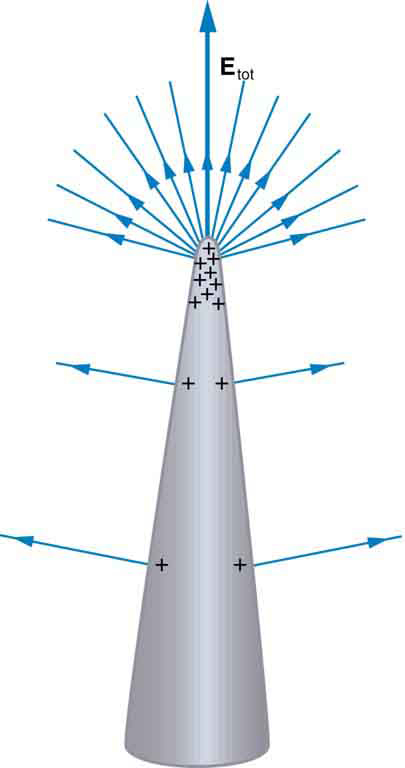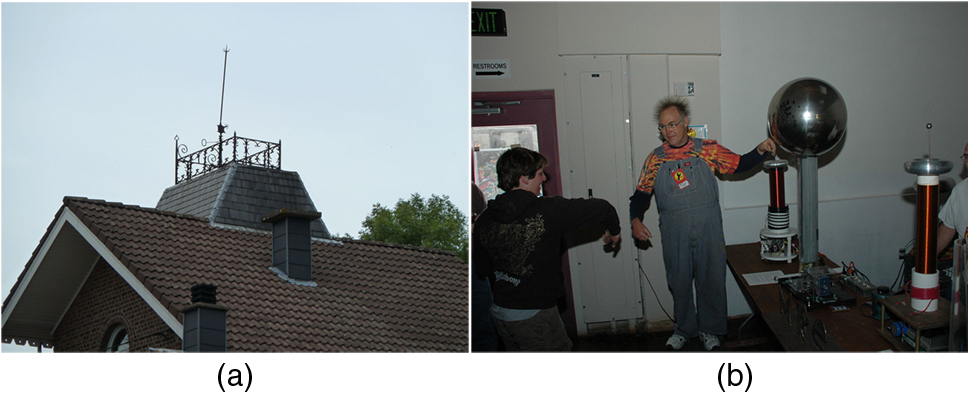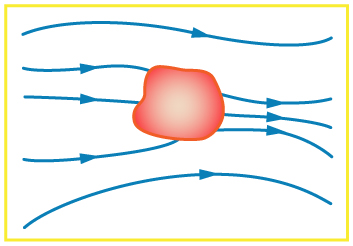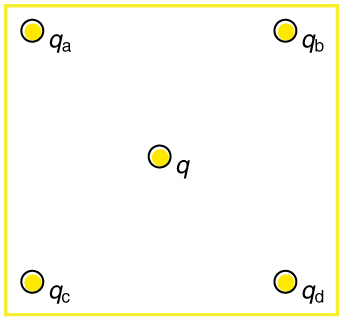| << Chapter < Page | Chapter >> Page > |


Is the object in [link] a conductor or an insulator? Justify your answer.

If the electric field lines in the figure above were perpendicular to the object, would it necessarily be a conductor? Explain.
The discussion of the electric field between two parallel conducting plates, in this module states that edge effects are less important if the plates are close together. What does close mean? That is, is the actual plate separation crucial, or is the ratio of plate separation to plate area crucial?
Would the self-created electric field at the end of a pointed conductor, such as a lightning rod, remove positive or negative charge from the conductor? Would the same sign charge be removed from a neutral pointed conductor by the application of a similar externally created electric field? (The answers to both questions have implications for charge transfer utilizing points.)
Why is a golfer with a metal club over her shoulder vulnerable to lightning in an open fairway? Would she be any safer under a tree?
Can the belt of a Van de Graaff accelerator be a conductor? Explain.
Are you relatively safe from lightning inside an automobile? Give two reasons.
Discuss pros and cons of a lightning rod being grounded versus simply being attached to a building.
Using the symmetry of the arrangement, show that the net Coulomb force on the charge at the center of the square below ( [link] ) is zero if the charges on the four corners are exactly equal.


Notification Switch
Would you like to follow the 'College physics' conversation and receive update notifications?